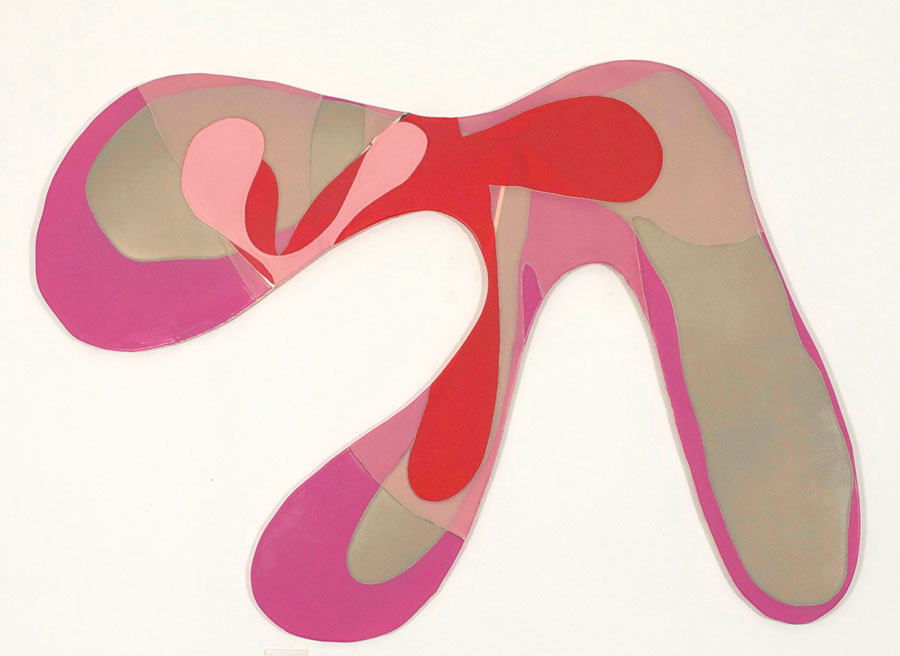« Reviews
Ron Johnson: Unboxed
Reynolds Gallery - Richmond, VA
By Owen Duffy
Over the past decade, Ron Johnson has driven out west almost every summer. He leaves his Richmond home, with no particular destination in mind, in search of big skies and bigger views. Registering the subtle topographical changes over time-how the land gradually morphs from plains to foothills to crags-is the raison d’etre of each dérive. Removed from spectacle, Johnson characterizes this journey as sense-heightening, enabling him to undertake an “archaeology of seeing” that requires an active approach to looking. One must work to detect those subtle instances when shifts in the landscape occur. Johnson translates and unpacks these experiences for viewers in his exhibition, “Unboxed.”

Ron Johnson, It Runs Out, 2014, acrylic and polyurethane on panel, 43” x 55.” Courtesy of the artist and Reynolds Gallery.
For this new series of paintings, Johnson has dropped the square format, which he worked with since earning his MFA from Virginia Commonwealth University in 2003, for a bold and biological one. To produce Stealing Love Isn’t Stealing-a prime example of Johnson’s new oeuvre-the artist shaped an MDF panel and coated it with layers of polyurethane and acrylic. Charged red pigment rests over the peach foundation; in turn, pink is layered over the red, and finally orange over the pink. Johnson’s use of polyurethane has two noteworthy visual consequences. It provides the strata with a spectrum of transparency, allowing what lies beneath to float through, thus altering the tone and shade of each subsequent plane. It also leaves the works with a cloaked materiality. The surface of Stealing Love Isn’t Stealing seems to exist in stasis as a semi-solid, like a gently heated wax or a chilled honey that would undoubtedly stick to one’s fingers. Indeed, Johnson’s paintings offer viewers much to dig through-an aesthetic excavation.
These artificial “hypercolors,” as Johnson calls them, set up an ongoing tension between the synthetic and the natural, particularly when one considers that the biomorphic geometry of such works as It Runs Out is rooted in the landscape of the American west. Following each arc and curve of It Runs Out encourages viewers to participate in an associative game while directing attention to the space between the panel’s three dendrites. In stark contrast to the pulsating presence of It Runs Out, the white negative space around the painting conjures a silent, partially formed absence; it is as if Johnson’s works are hypothetically subtracted from an unknowable Platonic whole. Consequently, one can think of It Runs Out as an enigma, a visual puzzle, that asks how and if the work might “fit” with its neighbors to begin building toward something more total.
From a historical point of view, Johnson’s works have much to say about the wooden reliefs of Hans Arp, Frank Stella’s irregular polygons, and other traditions within the paradigm of modern painting. This richness cannot be mined in a brief review. However, notwithstanding their strong connections to the past, these paintings emphasize the importance of active seeing in the contemporary moment, ascribing to it urgency that is necessary in our image-saturated culture.
(January 16 - February 28, 2015)
Owen Duffy is a Ph.D. candidate studying contemporary art history at Virginia Commonwealth University, a curatorial assistant at the Virginia Museum of Fine Arts, and a consulting editor for ARTPULSE.
Filed Under: Reviews



































Leave a Reply
You must be logged in to post a comment.